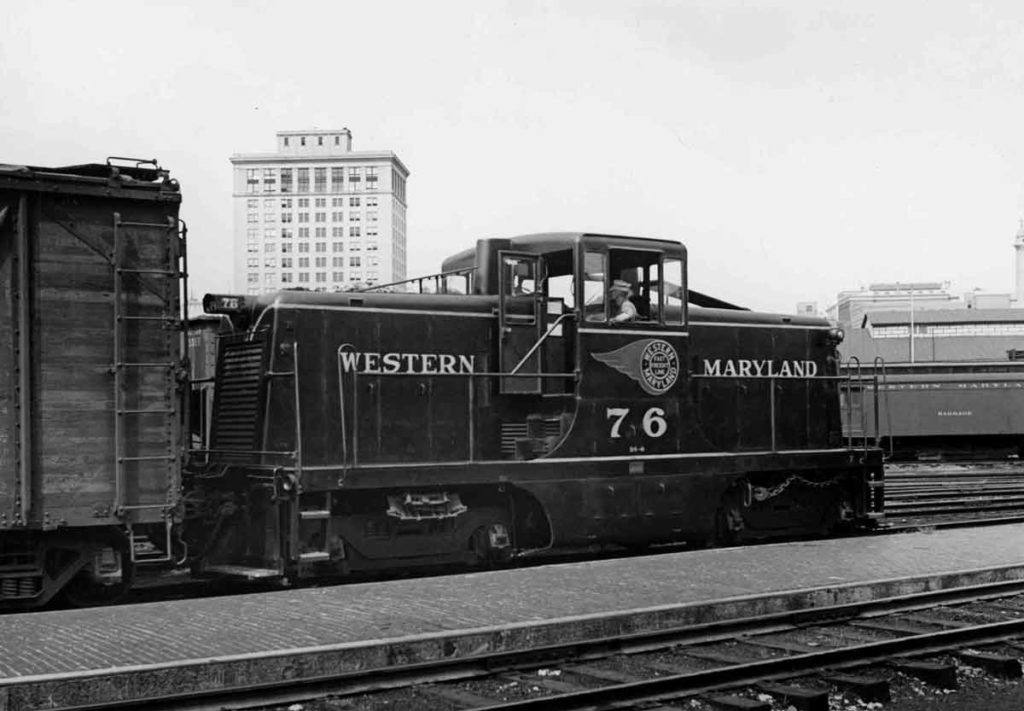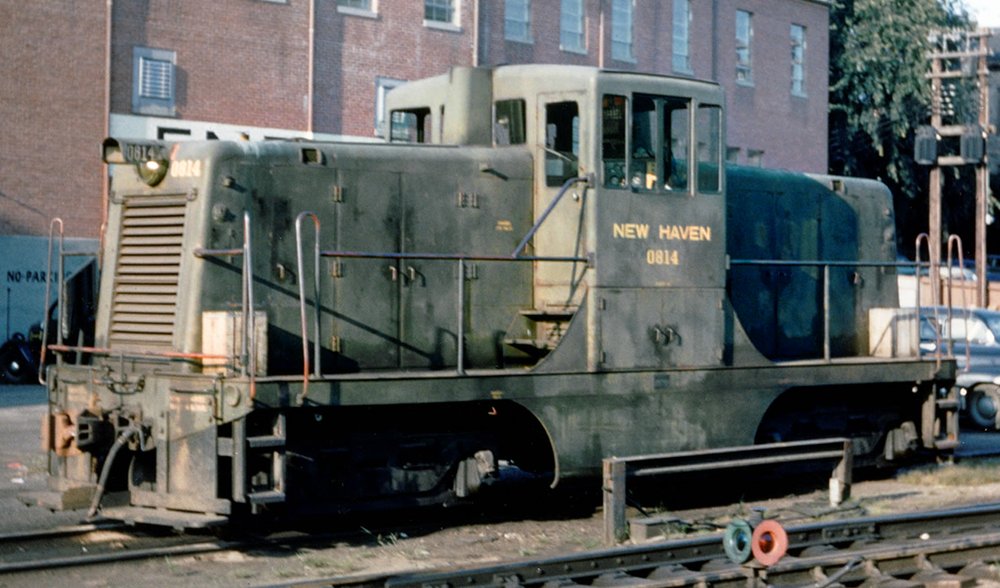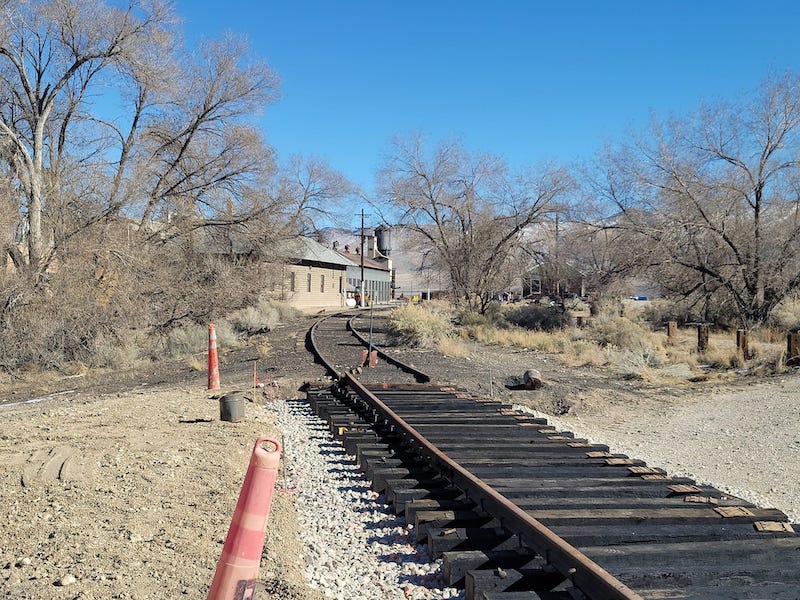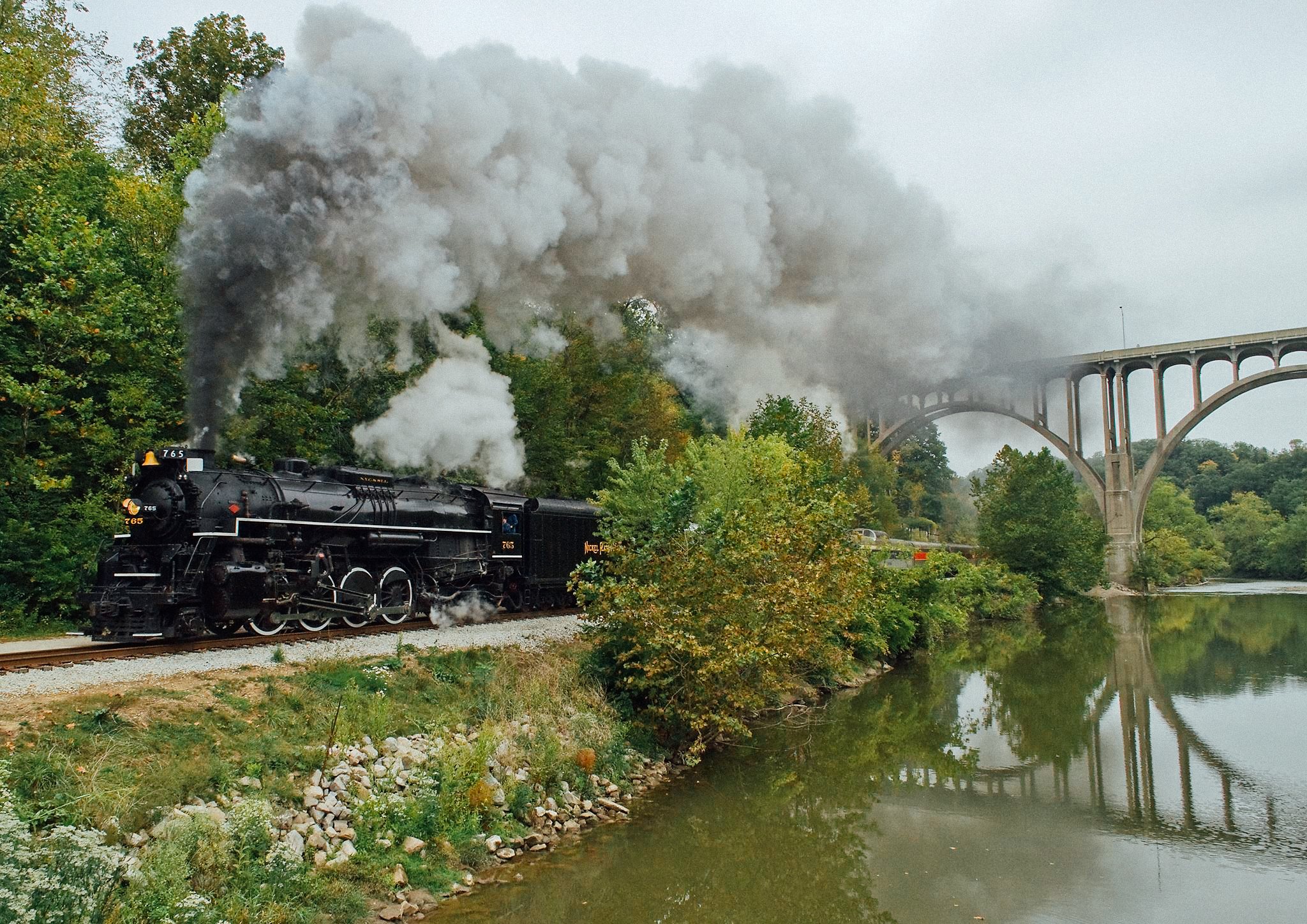East Broad Top #16 is one of the "big" Mikados that the EBT bought in 1916, which added superheating and the rather rare Southern valve gear to the same basic package as the "small" Mikados, the #14 and #15. Baldwin actually tried convincing EBT to purchase a narrow-gauge 2-10-2, but concerns over the grade resulted in them sticking with the Mikado wheel arrangement. As it was, the #16, and sister engines #17 and #18, forced the East Broad Top to upgrade much of their track from 60lb rail to 75lb rail. In the later years, as customers dwindled, the smaller Mikados were parked, and the larger Mikados were the primary power. A year before the EBT, as a common carrier, closed in 1956, the #16 had it's fires dropped, was run inside the roundhouse, and has been cold ever since. The #17 and #18 carried on for one more year, and the #18 was actually supposed to haul the final freight train, but some mechanical ailment had it come up lame (reportedly leaking superheater elements) and the #17 was used for the final run instead.
After the entirety of the East Broad Top was sold to Kovalchick Salvage and reactivated by Joe Jovalchick, the #16 and the #18 stayed in the roundhouse, while #12, #14 and #15 were the primary power. The #17 was restored to operation in 1968 and was used as reserve power, due to the condition of the track. In August 10 1985 Joe Kovalchick announced his intention to reactivate #16, but in the end #14 was rebuilt instead, reportedly because #16's boiler paperwork had been destroyed by a roof leak. The #16 was pulled out of the roundhouse for the first time since 1955 in July 1987 for a National Model Railroad Association photo op, and in 1991 she and #18 were pulled out for display with the two engines facing each other across Meadow Street.
With the purchase of the EBT in 2020 by the EBT Foundation, all 6 of the Mikados were evaluated as to which were the best candidates for return to service. The #16 received a steam cleaning March 11, 2020 in preparation for her inspection. Along with #14, #16 was selected in early May 2020 for rebuild, being found to be in the best shape due to it sitting out the decades of use in the tourist era. The #18 was reportedly run hard with very little maintenance in the final year of operation, and has several questionable firebox repairs, which resulted in the #16 being chosen over it.. Asbestos abatement occurred in early May 2-9, 2020 in roundhouse stall 8 and a successful hydrostatic test to determine the overhaul health of the boiler was performed the week of May 18-22, 2020. Tear down of #16 began in April of 2020 and work on the locomotive has included rebuilding of the tender trucks, fabrication of a new tender tank by Curry Rail Services of Holidaysburg, PA, new tires on tender wheels, replacement of 3/4 of the front tube sheet, replacing the staybolts, flues and superheater elements, and overhaul of the generator and air pumps.

























































